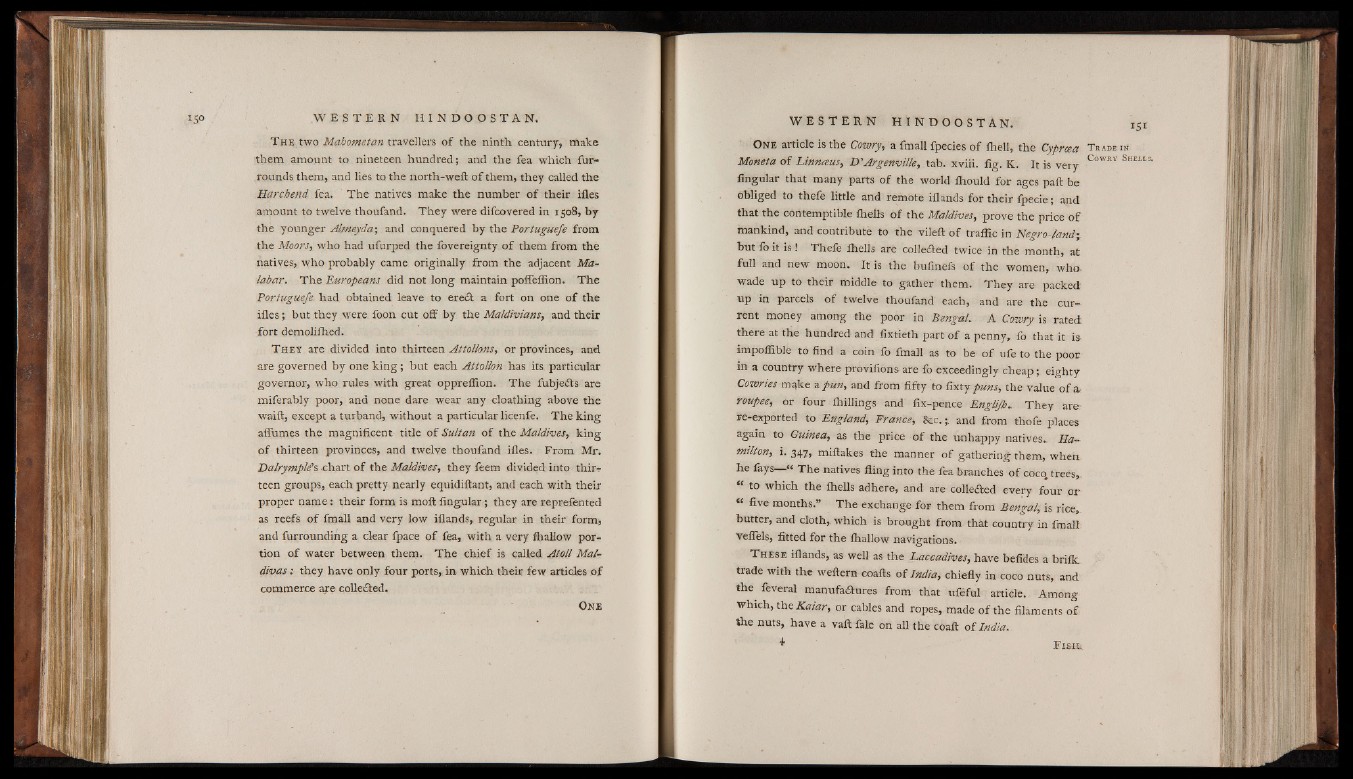
T h e two Mahometan travellers o f the ninth century, make
them amount to nineteen hundred; and the fea which fur-
rounds them, and lies to the north-weft o f them, they called the
Harchend fea. The natives make the number o f their ifles
amount to twelve thoufand. They were difcovered in 1508, by
the younger Alm&yda; and conquered by the Portuguefe from
the Moors, who had ufurped the fovereignty o f them from the
natives, who probably came originally from the adjacent Ma~
labar. The Europeans did not long maintain poffeffion. The
Portuguefe. had obtained leave to erect a fort on one o f the
ifles; but they were foon cut off by the Maldivians, and their
fort demolilhed.
T h e y are divided into thirteen Attollons, or provinces, and
are governed by one k in g ; but each Attollon has its particular
governor, who rules with great oppreflion. The fubjedts are
miferably poor, and none dare wear any cloathing above the
waift, except a turband, without a particular licenfe. The king
affumes the magnificent title of Sultan of the Maldives, king
of thirteen provinces, and twelve thoufand ifles. From Mr.
Dalrymple'i chart of the Maldives, they feem divided into thirteen
groups, each pretty nearly equidiftant, and each with their
proper name: their form is moil lingular; they are reprefented
as reefs o f fmall and very low iflands, regular in their form,
and furrounding a clear fpace of fea, with a very fhallow portion
of water between them. The chief is called Atoll Mal-
divas: they have only four ports, in which their few articles of
commerce are collected.
One
One article is the Cowry, a fmall fpecies o f ihell, the Cyprcea
Moneta of Linnaus, D ’Argenville, tab. xviii. fig. K. It is very
Angular that many parts o f the world ihould for ages paft be
Obliged to thefe little and remote iflands for their fpecie; and
that the contemptible Ihells o f the Maldives, prove the price of
mankind, and contribute to the vileft of traffic in Negrofand;
but fo it is ! Thefe Ihells are collected twice in the month, at
full and new moon. It is the bufinefs o f the women, who.
wade up to their middle to gather them. They are packed:
up in parcels o f twelve thoufand each, and are the current
money among the poor in Bengal* A Cowry is rated
there at the hundred and fixtieth part o f a penny,, io that it is.
impoflible to find a coin fo fmall as to be o f ufe to the poor
in a country where provifions are fo exceedingly cheap; eighty
Cowries make a pun, and from fifty to lixty puns, the value of a
roupee, or four ihillings and fix-pence Englijh. They are
re-exported to England, France, Sec.;. and from thofe places
again to Guinea, as the price o f the unhappy natives.. Hamilton,
i. 347, miflakes the manner o f gathering them, when
he lays « The natives fling into the fea branches o f cocq trees,.,
u to which the fheUs adhere, and are collefted every four or
“ five months.” The exchange for them from Bengal, is rice,,
butter, and cloth,, which is brought from that country in fmall
veffels, fitted for the ihallow navigations.
T hese iflands, as well as the Laccadives, have befides a brilk
trade with the weftern coafis o f India, chiefly in coco nuts, and
the feveral manufa<ftures from that ufeful article. Among
Which, theKaiar, or cables and ropes, made o f the filaments o f
the nuts, have a vaft fale on all the coafi: o f India..
^ F is it
T r a d e in
C o w r y S h e l l s .